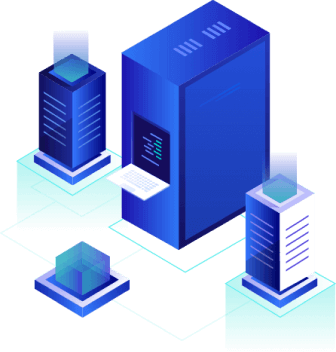Introduction To Blogging Platform Features
Blogging has come a long way from simple online journals to full-fledged content marketing tools. As we step into 2025, the competition among bloggers and platforms is fiercer than ever.
With advancements in AI, mobile technology, and SEO, bloggers need a platform that not only supports content creation but also optimizes and monetizes it effectively.
To stay ahead of the curve, blogging platforms must offer features that improve user experience, boost engagement, and maximize revenue potential.
In this article from CapraHost Blog, we’ll explore the Essential Features for Blogging Platforms in 2025 to help content creators thrive in an evolving digital landscape.
1: User-Friendly Interface
A user-friendly interface is a fundamental feature that every blogging platform must offer in 2025. It ensures that bloggers can easily navigate and manage their content regardless of their technical expertise. An intuitive dashboard with clear navigation, drag-and-drop editors, and customizable themes enhances user experience.
A streamlined onboarding process with guided tutorials can help new users set up their blogs efficiently. Moreover, platforms should provide real-time editing, collaboration tools, and seamless media integration to allow content creators to focus on writing rather than struggling with technical complexities.
Personalization options, such as customizable layouts and easy font and color selection, ensure that bloggers can create a unique brand identity without coding knowledge.
Accessibility features like voice commands and screen reader compatibility further enhance usability. Ultimately, a well-designed interface reduces friction and encourages bloggers to publish content consistently.
Take the First Step Towards Success! Start Your Hosting Journey
Join CapraHost’s Growing Community! Experience Seamless Hosting Solutions!
2: Mobile Optimization
With mobile devices accounting for a significant portion of web traffic, mobile optimization is no longer optional for blogging platforms in 2025. A fully responsive design ensures that blogs display correctly on various screen sizes, providing an optimal reading experience.
Mobile-friendly themes, touch-friendly navigation, and accelerated mobile pages (AMP) enhance performance and usability. Additionally, platforms should offer mobile app support, enabling bloggers to create, edit, and manage content on the go.
Features like voice-to-text integration, offline editing capabilities, and push notifications can further improve mobile accessibility.
Fast loading times and minimized resource consumption are crucial for retaining mobile users. Search engines prioritize mobile-friendly websites, making mobile optimization essential for SEO success.
By prioritizing mobile responsiveness, blogging platforms can help creators reach a broader audience and improve user engagement.
3: SEO & Performance Optimization
Search engine optimization (SEO) and Performance Optimization Of Your Website are crucial for ensuring that blogs attract traffic and rank well in search results. A robust blogging platform should offer built-in SEO tools such as customizable meta tags, keyword suggestions, structured data markup, and automatic sitemap generation.
Speed optimization features like caching, image compression, and lazy loading improve user experience and search rankings. Blogging platforms should also provide analytics and insights, enabling bloggers to track performance and make data-driven decisions.
Moreover, clean and optimized code, content delivery network (CDN) integration, and secure hosting contribute to improved site performance.
By incorporating these features, blogging platforms ensure that bloggers can maximize visibility, retain visitors, and enhance the overall user experience.
4: AI-Powered Assistance
Artificial intelligence (AI) is transforming blogging by offering smart assistance to enhance content creation and management. AI-powered tools provide automated content suggestions, grammar and style checks, and readability analysis.
Advanced AI can generate topic ideas based on trends and audience preferences, helping bloggers stay relevant. Chatbots and virtual assistants can provide real-time support, answering queries and guiding users through complex tasks.
AI-driven personalization adapts content based on user behavior, improving engagement and retention.
Moreover, AI-powered transcription and translation tools help expand reach by making content accessible in multiple languages.
By leveraging AI, blogging platforms in 2025 can empower creators to produce high-quality content efficiently while reducing manual effort.
5: Advanced Security Features
Security remains a top priority for blogging platforms in 2025, given the increasing cyber threats targeting online content creators. Essential security features include SSL encryption, two-factor authentication (2FA), and automatic malware scanning to protect user data.
Platforms should offer regular security updates and backups to prevent data loss. Role-based access control ensures that only authorized users can modify content, reducing the risk of breaches. Secure hosting solutions with DDoS protection and firewalls enhance overall platform security.
Moreover, AI-driven threat detection can identify and mitigate potential risks in real-time.
By Implementing These Advanced Security Measures, blogging platforms can provide a safe environment for bloggers to create and share content without fear of cyberattacks or data breaches.
6: Monetization Options
In 2025, blogging platforms must offer diverse monetization options to help bloggers generate revenue. Integrated advertising solutions, such as Google AdSense and native ads, provide passive income opportunities.
Subscription-based models and paywalls enable content creators to offer premium content for paying subscribers. Affiliate marketing tools allow bloggers to earn commissions by promoting products and services.
Crowdfunding and donation integrations, like Patreon or Buy Me a Coffee, offer alternative revenue streams.
Moreover, blogging platforms should support digital product sales, such as e-books, courses, and exclusive content. A flexible and secure payment processing system ensures seamless financial transactions, making monetization effortless for bloggers.
7: Social Media Integration
Social Media & Influencer Marketing integration is essential for expanding reach and driving traffic to blogs. Blogging platforms should offer easy sharing options, enabling bloggers to post content directly to platforms like Facebook, Twitter, LinkedIn, and Instagram.
Automated social media posting and scheduling tools save time and ensure consistent engagement. Platforms should also support social media widgets, allowing visitors to share and comment using their social media accounts.
Analytics tools can track social media performance, helping bloggers refine their content strategies. By integrating seamlessly with social media, blogging platforms can help creators grow their audience and increase brand visibility.
8: Content Management & Collaboration Tools
Effective content management and collaboration tools streamline the blogging process. A well-organized content library with tagging and categorization options enhances content retrieval.
Version control features allow bloggers to track changes and revert to previous versions. Multi-author support and role-based permissions facilitate team collaboration, enabling editors, writers, and designers to work together efficiently.
Integration with project management tools, such as Trello or Asana, can improve workflow organization. Moreover, automated editorial calendars help bloggers plan and schedule content effectively, ensuring consistent publication.
9: Multimedia Support
Engaging blogs require multimedia support, including images, videos, podcasts, and interactive elements. Blogging platforms should offer seamless media uploads, editing tools, and embedding options.
Support for high-resolution images, video hosting, and podcast integration enhances content quality. Interactive content elements, such as polls, quizzes, and animations, improve reader engagement.
Optimized Image & Multimedia Content contributes to improved SEO performance and user experience, making it a crucial feature for modern blogging platforms.
10: E-commerce Integration
As bloggers increasingly diversify their revenue streams, e-commerce integration has become a vital feature.
Blogging platforms should support built-in online stores, allowing users to sell physical and digital products. Secure payment gateways, inventory management, and customizable storefronts enhance e-commerce capabilities.
Integration with Dropshipping services and third-party marketplaces expands selling opportunities. Subscription-based products and membership sites further increase monetization potential.
By offering e-commerce functionality, blogging platforms empower content creators to turn their blogs into full-fledged businesses.

11: Analytics & Reporting Tools
Analytics and reporting tools are critical for bloggers to track their content’s performance and audience engagement. A robust analytics system provides insights into traffic sources, user behavior, and content effectiveness.
Modern blogging platforms should offer real-time data visualization, heatmaps, and detailed metrics on page views, bounce rates, and session durations.
AI-driven analytics can suggest improvements, identify trends, and optimize content strategy. Integration with Google Analytics, heat mapping tools, and A/B testing features further enhance a blogger’s ability to make informed decisions.
The ability to generate customizable reports and automate performance summaries allows bloggers to refine their approach continuously.
12: Community Building Features
Community engagement is vital for the success of any blog. Features like comment sections, forums, and discussion boards help foster interaction.
Modern platforms should include AI-moderated comments, customizable user profiles, and gamification elements like badges and leaderboards to encourage participation.
Social media integration enables seamless sharing and engagement, while email subscriptions and notifications keep readers connected.
User-generated content support, such as guest posting or collaborative writing, can strengthen community involvement. Membership and subscription-based access can create exclusive content for dedicated followers, enhancing loyalty and engagement.
13: Backup & Migration Features
A Robust Backup and Migration System is essential to ensure data security and ease of platform transitions. Automated daily backups with cloud storage support provide protection against data loss.
A comprehensive restore function should allow bloggers to recover specific versions of content.
For migration, platforms must support seamless importing and exporting of content, preserving metadata, images, and SEO settings.
Compatibility with third-party backup services, such as Google Drive or Dropbox, ensures additional security. One-click migration tools that assist in transferring entire blogs between platforms make transitions smooth and hassle-free.
14: Accessibility & Inclusivity Features
A modern Blogging Platform must Prioritize Accessibility & Inclusivity to cater to a diverse audience. Features like text-to-speech, keyboard navigation, and high-contrast modes improve usability for individuals with disabilities.
Compliance with WCAG (Web Content Accessibility Guidelines) ensures that the platform meets legal and ethical standards. AI-powered captioning and transcription services enhance content accessibility for hearing-impaired users.
Language translation tools break barriers and expand readership globally. Customizable font sizes and reading modes provide a user-friendly experience, making content accessible to all.
15: Future-Proof Scalability
A blogging platform should be designed for long-term growth, adapting to evolving trends and increasing demands.
Cloud-based hosting with scalable bandwidth ensures seamless performance as traffic grows. Modular architectures enable the addition of new features without major overhauls.
Integration with evolving technologies, such as AI-driven content creation and blockchain-based monetization, future-proofs the platform.
Headless CMS compatibility allows content to be repurposed across different digital mediums. Multi-author support and role-based access ensure scalability for team collaboration.
The ability to expand storage, enhance security, and integrate new marketing tools makes a blogging platform sustainable in the long run.
Why WordPress is the Recommended Choice for Most Bloggers?
Blogging has become an essential platform for individuals and businesses to share ideas, showcase expertise, and engage with audiences.
Among the numerous content management systems (CMS) available, WordPress Stands Out as the most recommended choice for bloggers. But why do most bloggers prefer WordPress over other platforms?
Here are the key reasons:
- User-Friendly Interface: WordPress is designed with beginners in mind. Its intuitive dashboard makes it easy to create, edit, and manage blog posts without requiring any coding skills. Even first-time users can quickly learn how to navigate the platform and start publishing content.
- Customizability with Themes and Plugins: WordPress offers thousands of free and premium themes, allowing bloggers to design their sites according to their preferences. Additionally, its vast library of plugins enables users to add various functionalities, such as SEO tools, social media integration, and e-commerce features, without any technical expertise.
- SEO-Friendly Features: A successful blog needs visibility, and WordPress is built with SEO in mind. It offers clean code, fast loading speeds, and plugins like Yoast SEO and Rank Math, which help optimize content for search engines. This makes it easier for blogs to rank higher on Google and attract organic traffic.
- Full Ownership and Control: Unlike hosted platforms such as Medium or Wix, self-hosted WordPress (WordPress.org) provides full control over content, design, and monetization. Bloggers can customize their sites without limitations and are not restricted by third-party terms and conditions.
- Strong Community Support: WordPress powers over 40% of all websites, making it one of the most widely used CMS platforms. This extensive user base has led to a strong community that offers free tutorials, forums, and support to help bloggers troubleshoot issues and enhance their websites.
- Easy Monetization Options: For bloggers looking to earn money, WordPress provides multiple monetization methods, such as:
- Google AdSense for displaying ads
- Affiliate marketing through plugins like Thirsty Affiliates
- Selling digital products via WooCommerce
- Membership and subscription models using plugins like Member Press
- Regular Updates and Security: WordPress is regularly updated to ensure compatibility with modern web technologies and security patches. With plugins like Wordfence and Sucuri, bloggers can further enhance their site’s protection against cyber threats.
- Mobile Responsiveness: With a growing number of users browsing on mobile devices, WordPress themes are designed to be fully responsive. This ensures that blogs look great and function well across desktops, tablets, and smartphones.
WordPress remains the top choice for bloggers due to its ease of use, flexibility, SEO advantages, and strong support system.
Whether you’re starting a personal blog or building a professional content-driven website, WordPress offers all the tools needed for success.
Unlock the Power of Dedicated Servers with CapraHost! Sign Up Today!
Elevate Your Website’s Performance with CapraHost Dedicated Servers!
Conclusion
Blogging platforms have come a long way, and in 2025, they need to be smarter, faster, and more feature-rich than ever.
From AI-powered tools and SEO optimization to monetization options and community-building features, a great platform must support bloggers in every aspect of their journey.
By choosing a blogging platform with these essential features, content creators can stay ahead of the competition, engage their audience, and maximize their revenue potential.
Whether you’re a new blogger or an experienced content creator, investing in a future-ready platform is the key to long-term success.
Try CapraHost Today! Enjoy a worry-free web hosting experience, knowing your site is in trusted hands. Check out our WordPress Hosting Services!
FAQs (Frequently Asked Questions)
1: What is the most important SEO feature a blogging platform should have in 2025?
SEO (Search Engine Optimization) is critical for driving organic traffic to blogs. A modern blogging platform should offer:
- Built-in SEO tools: Features like meta title and description editors, keyword suggestions, and structured data support.
- Automatic schema markup: Helps search engines understand the content structure.
- Fast page speed optimization: Ensures quick loading times, which is a ranking factor.
- Mobile-first indexing support: Since most traffic comes from mobile devices, the platform should offer a responsive design.
- Integration with Google Search Console & Analytics: Helps track performance and optimize strategies.
Without these, a blog may struggle to rank well in search results.
2: How important is AI integration in blogging platforms for 2025?
AI is becoming essential for content creation, optimization, and user engagement. A modern blogging platform should integrate AI for:
- Content assistance: AI-generated topic suggestions, headline optimization, and grammar checks.
- Automated image and video suggestions: AI can recommend or generate media that fits the content.
- Chatbots and personalization: AI can provide automated customer support or recommend content based on user preferences.
- SEO optimization: AI can analyze trends and suggest better keywords, readability improvements, and structure changes.
AI-driven features will help bloggers create high-quality content faster and more efficiently.
3: What security features should a blogging platform have in 2025?
With rising cybersecurity threats, blogging platforms must provide robust security features, including:
- SSL encryption: Protects data and improves SEO rankings.
- Two-Factor Authentication (2FA): Adds an extra layer of security for login protection.
- Automated backups: Ensures content is never lost due to hacking or accidental deletion.
- DDoS protection: Shields against denial-of-service attacks that could take a blog offline.
- Regular security updates: Helps protect against newly discovered vulnerabilities.
A secure platform ensures both the bloggers and readers’ data is safe.
4: How can a blogging platform support monetization in 2025?
Monetization is a key concern for bloggers, and platforms should provide multiple ways to earn revenue, such as:
- Ad network integration: Easy connection with Google AdSense, Mediavine, or Ezoic.
- Affiliate marketing tools: Built-in features to add affiliate links and track performance.
- Subscription & membership options: Enables bloggers to charge for exclusive content.
- E-commerce support: Integration with Shopify, WooCommerce, or built-in online stores.
- Donation & crowdfunding tools: Options for readers to support via platforms like Patreon or Buy Me a Coffee.
With these features, bloggers can diversify their income sources.
5: Why is mobile optimization crucial for blogging platforms in 2025?
Over 70% of web traffic now comes from mobile devices, making mobile optimization a must. Essential mobile-friendly features include:
- Responsive design: Ensures the blog looks great on any screen size.
- Accelerated Mobile Pages (AMP): Speeds up page loading times on mobile.
- Touch-friendly navigation: Makes the site easier to browse on small screens.
- Voice search compatibility: Optimized for users searching via voice assistants like Siri and Google Assistant.
- PWA (Progressive Web App) support: Allows users to save blogs as apps on their home screen for offline reading.
Without mobile optimization, a blog risks losing traffic and engagement.
6: How can a blogging platform enhance user engagement and community building?
Engagement keeps readers coming back. Blogging platforms in 2025 should offer:
- Commenting systems: Built-in or third-party options like Disqus for interaction.
- Social media integration: Easy sharing and auto-posting on platforms like Twitter, Facebook, and Instagram.
- Live blogging features: Allows real-time updates during events.
- Gamification elements: Badges, points, or rewards for frequent commenters.
- Email marketing tools: Built-in newsletters and automated email sequences.
These features help create an interactive and loyal audience.
7: What customization options should a blogging platform offer in 2025?
A good blogging platform should allow complete customization to match branding and preferences, including:
- Drag-and-drop page builders: For easy layout design.
- Custom themes & templates: Wide selection of design options.
- Advanced typography & color control: Allows brand consistency.
- Custom widgets & plugins: Extends functionality without coding.
- Headless CMS support: For developers who want to use their own front-end solutions.
Customization ensures that bloggers can create a unique and professional-looking site without needing deep technical skills.
Read More:
- How to Conduct a Successful Content Audit in 2025 (With Free Checklist!)
- How Much Do Facebook Ads Cost in 2025? A Marketer’s Guide
- How Much Do LinkedIn Ads Cost in 2025? A Complete Pricing Guide
- What is Shared Web Hosting? A Beginner’s Guide
- What Is a Subdomain? A Complete Guide to When You Should Use One

 Continue With Google
Continue With Google
 continue with facebook
continue with facebook




